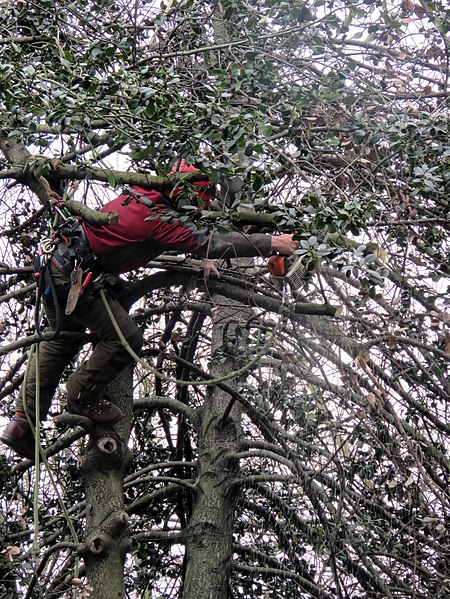 “Wind Sailing” is a method of crown reduction or pruning that removes some foliage mass which allows the wind to move more freely through the crown of a tree. While we’ve talked before that topping the tree an extremely bad idea, there is some controversy over wind sailing as well. There’s a wind sailing and then completely butchering the tree. Aggressive thinning can make the remaining branches more vulnerable to failure causing sudden branch drop or cause the entire tree to fall over or uproot.
“Wind Sailing” is a method of crown reduction or pruning that removes some foliage mass which allows the wind to move more freely through the crown of a tree. While we’ve talked before that topping the tree an extremely bad idea, there is some controversy over wind sailing as well. There’s a wind sailing and then completely butchering the tree. Aggressive thinning can make the remaining branches more vulnerable to failure causing sudden branch drop or cause the entire tree to fall over or uproot.
Fit conifers, like we have around here, don’t need a lot of wind sailing but more deadwood removal. Trees need their leaves and needles to produce food for its survival so really just thinning out the dead branches and leaves can be a benefit, but taking out too many limbs can be a hazard.
Tree crown reduction is usually one of the best options if you have a tree close to the house that just makes a mess every year. If you’re worried about the tree falling in a windstorm, all trees move with the wind and they must bend. It’s moving the creates their growth and the tree knows where to add wood or strength and weak areas so when a tree is aggressively trimmed or thinned, it can no longer bend or move, which no longer builds up the necessary anchoring roots and limbs it needs. It can actually create a false sense of security with the tree.
So is wind sailing a bad idea?
Here’s what I would say; wind sailing or crown reduction should only be done by expert tree removal professionals. Just chopping off limbs willy-nilly could cause even more damage to the tree and possibly your property. Mature conifers should not be thinned that much and really only dead or dying limbs be removed. The branches provide a buffer to each other and protect each other and your property from high winds. If a large branch is removed, the smaller branches are now exposed to a greater range of motion increasing the probability that the whole tree will just come down.
Douglas firs are one of our largest conifer species around here and are also known to drop fitness limbs during moderate to high winds. Thinning out these branches could be used in lieu of losing the entire tree. Of course, it’s impossible to predict sudden branch drop or branch failure so it’s best to have the tree analyzed by a professional.
Crown thinning is slightly different than wind sailing. Instead of Crown reduction, which can sound an awful lot like topping a tree, crown cleaning is often recommended. This will be removing broken branches that might hang high in the canopy or be removing any significant damage to the crown itself.
Regardless, if you’re facing an issue with the tree close to the house or that could just be a hazard to your property, it’s best to discuss these issues on a case-by-case basis with a tree service professional. Give us a call today and we are happy to discuss things over the phone or come out for an estimate.
